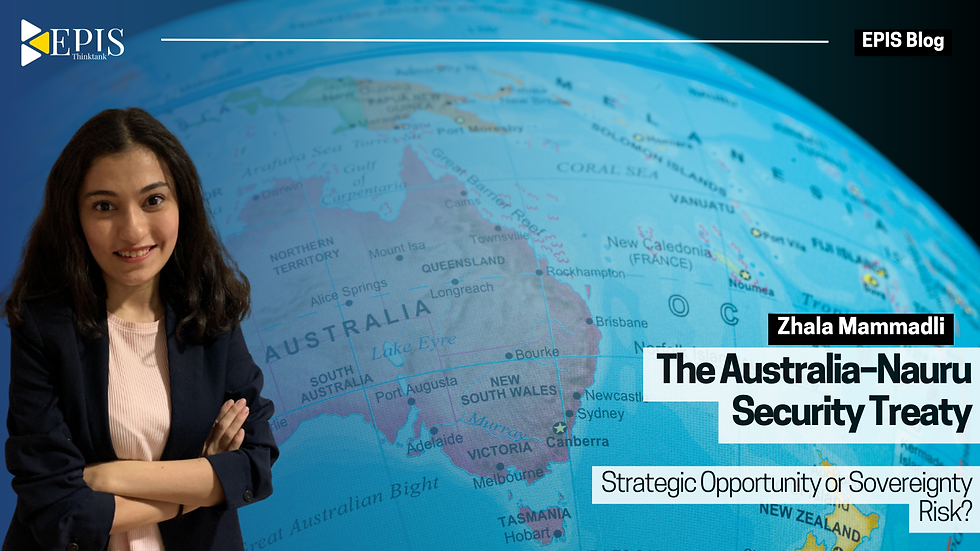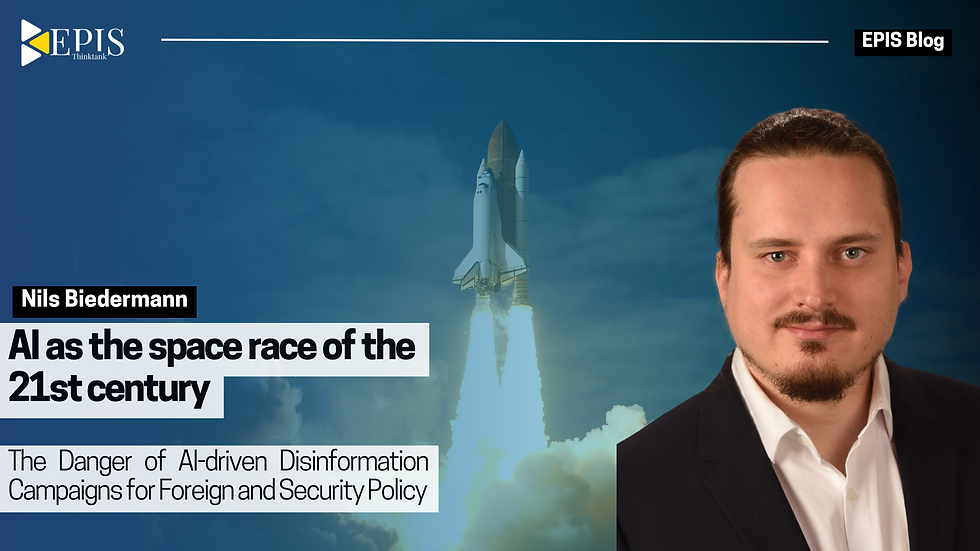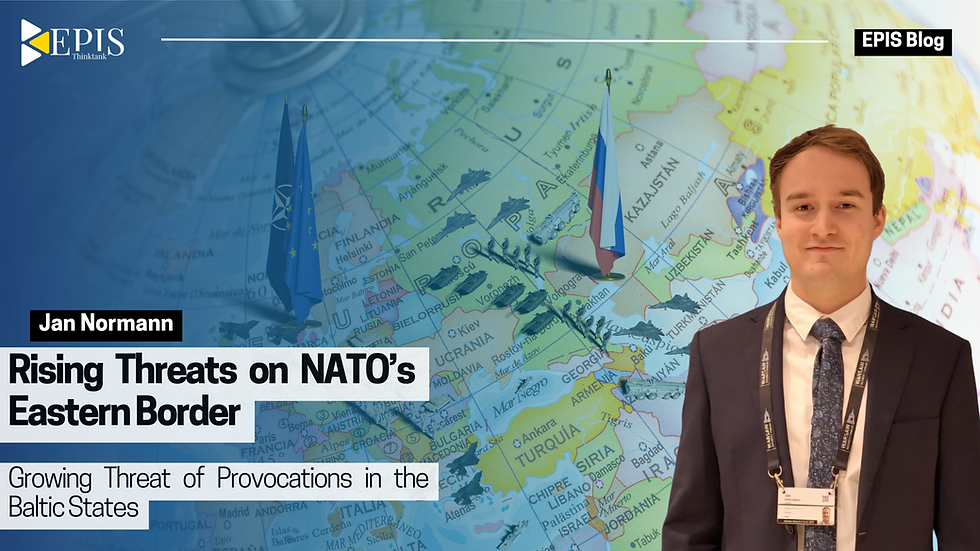Russia and Japan the Archipelago of Discord?: The Ongoing Dispute on the Kuril Islands Between Tokyo and Moscow
- EPIS Think Tank

- 5 days ago
- 5 min read

A remnant of the Second World War
2025 marks 80 years since the end of the Second World War and the Allied victory over the Axis. Nevertheless, the armistice does not seem to have ended all conflicts. Indeed, the Sea of Okhotsk, the jewel of Eastern Siberia, is still the meeting point of the two blocs that inherited the Cold War. It is surrounded to the west by Sakhalin Island - Karafuto in Japanese, and the Kamchatka peninsula to the west. Southwards, the Kuril Islands - or Chishima, in Japanese. This archipelago, which makes up the bulk of one of Russia's richest oblasts, has been at the heart of a territorial dispute since 1945. This conflict, which has resulted in erratic control of the region by two superpowers, is still a major source of tension between Tokyo and Moscow, due to its strategic and tactical importance. Growing tensions in the Far East are exacerbating this conflict: will it ever be resolved?
A region that Japan wants
To fully understand the current stakes in this conflict, we first need to look at the Sea of Okhotsk region. Originally inhabited by the Ainu, the Kuril archipelago and the island of Karafuto were colonised by Russia around 1650. Two hundred years later, in 1855, the Treaty of Shimoda set the Japanese border north of Hokkaidō, leaving sovereignty of the islands to the Russians. In 1875, the border was revised, and the Japanese obtained the Kurils in exchange for the south of Sakhalin Island. In 1904, the Japanese Empire declared war on its Russian counterpart. The aim was to seize Sakhalin Island and its rich mineral resources. However, Tokyo would only obtain the south of the coveted island. Hirohito's Japan tried, through the Lake Khassan incident and the Manchurian War, to wrest the island from the Soviets, which ended in a bitter failure for the Empire. It is clear that Japan claimed these islands as much for its territorial ambitions, establishing for example a military base to the south of Sakhalin Island (the Yamagata Aritomo "line of interest"), as for the resources that Imperial Japan was desperately short of for its tanks and aircraft.
Soviet involvement in the region
On the other side of the sea, since the end of the 17th century, Russia has been constantly seeking to expand eastwards, in order to find a warm-water port open to the Pacific Ocean. These ambitions came up against Japanese imperialism, particularly at the end of the 19th century. After the separation of the island following the 1904-1905 war, Nicholas II established several colonies to consolidate his control over the region. The Soviets took up the idea and set up several gulags in the north of the island to extract oil. At the end of the Second World War, with Japan seemingly on the verge of collapse, Stalin honoured the promise he had made at the Teheran conference and went to war against Japan, invading Sakhalin and the Kuril Islands. The fierce resistance of the Japanese in the archipelago testified to the esteem in which Tokyo held the country, unlike Sakhalin, which had only a very small garrison. The Treaty of San Francisco, 1945, which was not ratified by the USSR, only gave the Soviets sovereignty over South Sakhalin, but not over the neighbouring archipelago. Since 1945, this anomaly has led Japan to contest the sovereignty of the Kuril archipelago, which remains in Russian hands. This annexation enabled the USSR, which was the last to arrive in the Pacific theatre, to obtain a slice of the cake, in order to compensate for the American presence in the region, which was more marked than in Europe.
A coveted land, still a source of tension today
Sakhalin and the Kuril Islands proved to be a good investment for Stalin. Rich in fish stocks, most of which are still exported to Japan, the Sea of Okhotsk is also a central point for Russian oil and gas production. With over two billion barrels of reserves and 485 billion m3 of exploited natural gas, 57% of the oblast's economy is based on fossil fuels. Like the Japanese in the last century, Russia's presence in the region has important economic and strategic objectives. Thanks to these fossil resources, Sakhalin Oblast is the twenty-second richest subject in the Russian Federation, but also the fourth richest in terms of GDP per capita. So it's clear that the powers that be in Moscow want to keep this goose that lays golden eggs.
The Sea of Okhotsk is encircled by Russia, and only the Vries Strait, in the middle of the archipelago, does not freeze over in winter. This means that the Russian Pacific fleet can intervene in the Far East without going through third-party allies. This manoeuvring ground also provides a land-based military presence in the region. The 68th army corps and the 75th) missile brigade, spread between Sakhalin and the Kurils, reinforce the presence of the Kremlin, which wants to protect this nerve centre of the country's eastern defence at all costs. The attack on Korean Airline flight 007 in 1983, which killed 269 people as a result of a flight path deviation in Soviet airspace, bears witness to this: the Kurils and Sakhalin are the perfect point from which to strike at the West from the East.
A conflict that persists to this day
The Shimoda Treaty is still making waves today. Under the terms of the treaty, Japan still claims sovereignty over the four southernmost islands of the Kuril Archipelago. Tokyo still considers that Russia's entry into the war - thus breaking the non-aggression pact between the two countries - and the annexation of the Kuril Islands, are a violation of international law. Still claiming sovereignty over its islands, former Japanese Prime Minister Shinzō Abe had tried between 2013 and 2022 to re-establish contact with Moscow to increase bilateral cooperation in the area, but the war in Ukraine halted talks. Putin still argues today that Japan should recognise Russian sovereignty, so that talks can begin at a later date.
In Russia, public opinion is very unfavourable to the transfer of the islands to Japan: many see it as the price to be paid for the Russian lives lost during the Great Patriotic War. In 2004, some Ainu representatives wrote to Vladimir Putin, asking him to recognise the genocide of this indigenous people by the Japanese. President Medvedev also considered the area to be an integral part of Russian territory. With the conflict still frozen to this day, it remains unlikely - despite 80 years of dispute between the two countries - that the current state of affairs will allow either Japan or Russia to reach a consensus on the Kuril Islands.



Comments